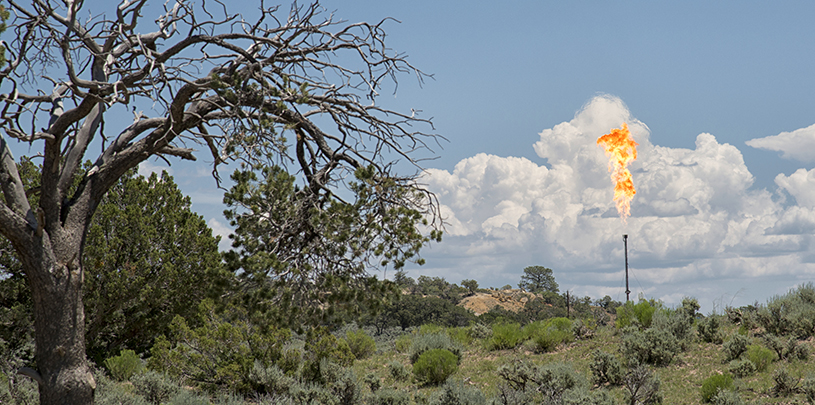
 by Amber Reimondo, Energy Director
by Amber Reimondo, Energy Director
When your kitchen sink is leaking, what do you do? Fix it.
On the Navajo Nation, tribal leaders are looking at taking steps to capture leaking methane, a potent greenhouse gas. Their efforts could drastically reduce methane emissions from oil and gas operations, slow the effects of climate change, improve the health of communities, and generate tribal revenues — a win-win-win for the planet, people, and local economy.
Methane is the main component of natural gas. Since natural gas and oil often lie in the same layer underground, methane escapes when you drill a hole to extract either fuel, regardless of which one you’re after.
Methane is released by oil and gas companies in three main ways:
On the Navajo Nation, the methane emissions rate is 65 percent higher than the national average. Companies are leaking about 13,000 tons of methane per year, the equivalent of yearly emissions from 235,000 automobiles. That’s a lot of natural gas, and dollars, that — poof — are gone into the atmosphere.
Reducing wasteful practices comes with a lot to gain. Capturing those emissions could provide enough gas to cover the annual use of every home on the entire Navajo Nation.
In a positive step, the Navajo Nation’s Environmental Protection Agency is considering establishing its own tribal program that could address emissions concerns from oil and gas production sites on its lands. In doing this, the Navajo Nation would be one of the first tribal nations in the country to exercise its sovereignty in establishing an oil and gas emissions program of this caliber.
In addition to the Navajo Nation’s leadership in climate solutions, the state of New Mexico is developing enforceable rules to reduce methane emissions from new and existing oil and gas operations. And the state of Colorado continues to set the gold standard for state-level rules.
These are promising steps forward on the Colorado Plateau, and we are looking to the Navajo Nation, Colorado, and New Mexico as examples of how we can similarly tackle climate change on local and regional scales.
Reducing methane emissions makes sense. The triple bottom line, as green business likes to call it, results in benefits for people and the planet, as well as profits.
Reducing methane emissions is a huge part of tackling climate change. There are still a number of challenges ahead, but the Navajo Nation and states of Colorado and New Mexico have shown themselves to be regional leaders in addressing methane emissions from oil and gas developments.
For more information about methane emissions on the Navajo Nation, see this newly released white paper.
Arizona Governor Katie Hobbs is the latest elected official to call for an environmental review of Pinyon Plain uranium mine.
Read MoreDr. Laura Crossey explains what scientists know about groundwater in the Grand Canyon region.
Read MoreMore than 275,000 pounds of radioactive materials imported from the Japan Atomic Energy Agency headed to Utah's White Mesa Mill.
Read More